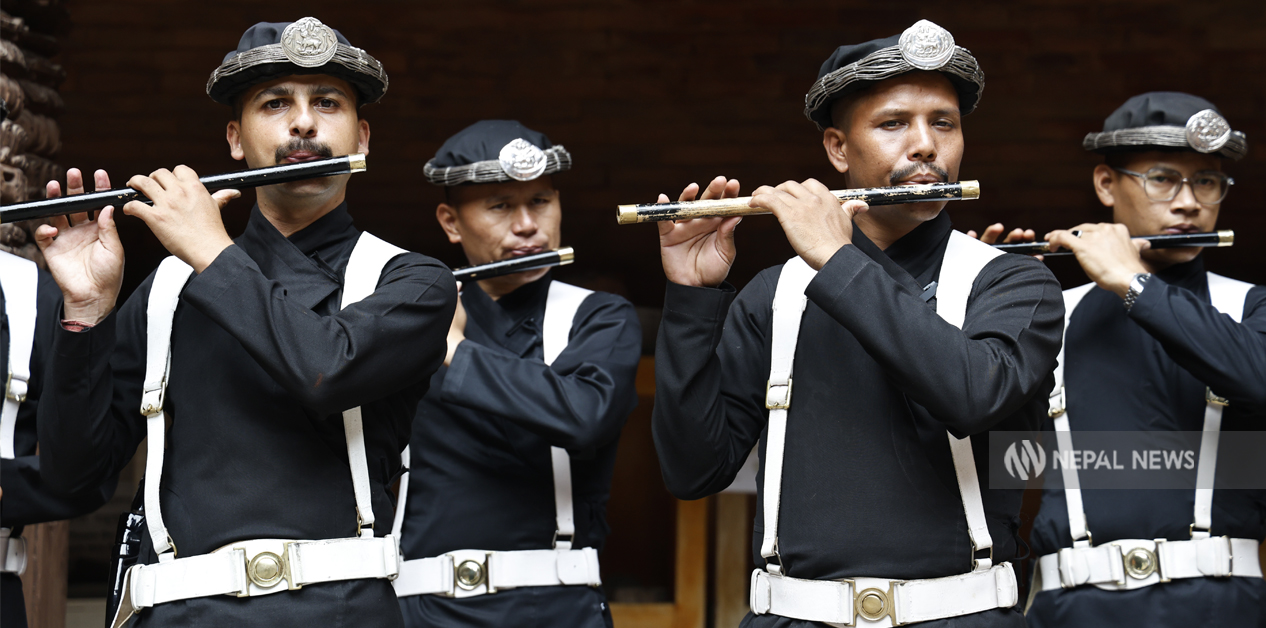

There is a tune that has been passed down through generations. Even before the word Dashain is spoken, this melody begins to echo in our ears.
When we imagine the atmosphere of Dashain, its soundtrack automatically plays in our minds. That tune, etched into our hearts as the sound of Dashain, is Malashree.
As soon as Malashree is heard, emotional and experiential memories associated with Dashain awaken. Like a kite flying in the open sky, waves of joy begin to flow within us.
According to musician and researcher Bulu Mukarung, Malashree is the tune of autumn. “The moment Malashree is played, one feels that Dashain has arrived,” he says.
At this time, temples and shrines across the country are crowded with devotees. From early morning, cultural instruments play as hymn houses immerse themselves in Malashree.
As the tune spreads, joy and festivity fill the environment. We are now in that very joyous season. From temples, squares, rest houses, public vehicles to even mobile ringtones, Malashree resonates everywhere.
Its special feature is that it is played at a specific time. Researcher Ramsharan Darnal writes in his book Sangeet Parikrama: “In Nepal, Malashree is sung only during the autumn season, throughout Dashain, in devotion to Goddess Durga Bhawani. Though it is customary to sing it from Kage Ashtami, it carries greater significance from Ghatasthapana onwards.”
The tradition continues until the full moon. From east to west, Malashree is sung in praise of Goddess Durga and female power, with regional variations in rhythm, melody, and instruments.
According to Mukarung, Sanai introduces a consistent tune from Ghatasthapana. The Gandharva community sings Malashree in the Pinglu style, while the sarangi plays songs of Goddess Kali.
In the Kathmandu Valley, the Newar community maintains a tradition of playing seasonal music. From Sitalamaju in Baisakh to Ghatu in Chaitra, music flows with the cycle of seasons. Mukarung notes that the Barhamase (round the year) tunes were created during the Malla period.
Even devotional hymns here follow seasonal ragas, often describing deities and their power. Malashree is one such seasonal raga, blending religious praise with depictions of autumn.
Although originally an autumnal melody, Mukarung explains, Malashree was later tied to the worship of gods and goddesses.
The spread of Malashree from Gorkha Palace to Jumla’s Kanakasundari Temple was made possible largely by Gandharva and Badi communities.
But exactly when it began is uncertain. Experts suggest its history is more than 400 years old. Musician Ramkrishna Duwal says Malla kings Mahindra Malla and Pratap Malla composed Malashree songs, with Pratap Malla’s version still most popular today.
Mukarung adds that while Malashree existed earlier, it received royal patronage during the Malla era.Researcher Darnal records that in 1734 BS, King Jitamitra Malla mentioned Malashree in historical inscriptions.
It is described as a raga capable of producing many tunes, sometimes with lyrics and sometimes only as melody.
For centuries, it has also thrived as a folk melody, with verses like:
“Dashain has arrived, the marigold blooms,
Offer goats to the deities, blood of rams to the shrines,
Meat to the fortunate, lentils to the poor.”
Like other traditional music, some practices and facts about Malashree are fading.
Yet its strength lies in adaptability—it can be played not only on traditional instruments but also modern ones.
This ability to survive through innovation keeps it alive.
Today, Malashree is heard on sarangi, flute, sitar, sarod, guitar, sanai, damaru, as well as keyboard, piano, and conga.
Its resonance extends beyond Nepal, evoking nostalgia wherever Nepalis live. No matter where or how it is played, Malashree now symbolizes the spread of spiritual energy, carrying messages of new growth and renewed joy.